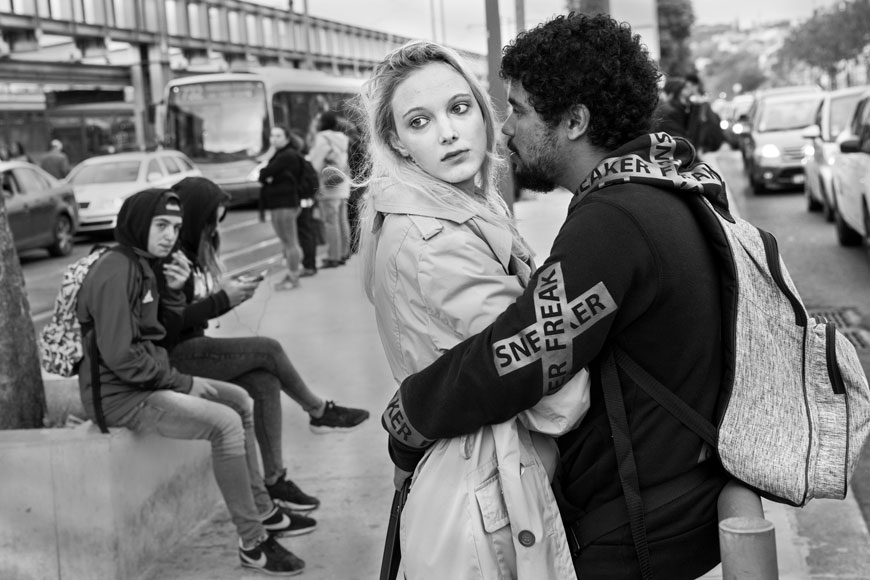More About Street Photographers
More About Street Photographers
Blog Article
Indicators on Street Photographers You Need To Know
Table of ContentsThe Basic Principles Of Street Photographers Indicators on Street Photographers You Should KnowStreet Photographers Can Be Fun For AnyoneStreet Photographers for DummiesThe Facts About Street Photographers Uncovered
A genre of digital photography that records day-to-day life in a public location. The actual publicness of the setting makes it possible for the photographer to take candid pictures of complete strangers, often without their understanding. Road photographers do not always have a social objective in mind, yet they choose to separate and record minutes which may otherwise go undetected (Street Photographers).Though he was affected by a number of those who influenced the street photographers of the 1950s and '60s, he was not primarily interested in recording the spirit of the road. The impulse to aesthetically record individuals in public began with 19th-century painters such as Edgar Degas, douard Manet, and Henri de Toulouse-Lautrec, who worked side by side with photographers trying to catch the essence of urban life.
In comparison to Atget, professional photographer Charles Marville was worked with by the city of Paris to develop an encyclopaedic file of Haussmann's metropolitan preparation job as it unravelled, hence old and brand-new Paris. While the digital photographers' subject was essentially the exact same, the outcomes were significantly various, showing the effect of the digital photographer's bent on the personality of the photos he produced.
Offered the great high quality of his photos and the breadth of product, architects and artists frequently got Atget's prints to make use of as referral for their own job, though industrial passions were rarely his primary motivation. Rather, he was driven to photo every last residue of the Paris he enjoyed. The mingled interest and necessity of his goal shine through, resulting in photos that narrate his own experience of the city, top qualities that expected road digital photography of the 20th century.
The Ultimate Guide To Street Photographers
They expose the city through his eyes. His work and basic understanding of digital photography as an art form functioned as motivation to generations of professional photographers that adhered to. The future generation of street digital photographers, though they likely did not describe themselves as such, was ushered in by the photojournalism of Hungarian-born professional photographer Andr Kertsz.
Unlike his peers, Brassa made use of a larger-format Voigtlnder video camera with a much longer direct exposure time, compeling him to be much more computed and thoughtful in his method than he might have been if making use of a Leica. (It is believed that he may not have actually been able to pay for a Leica during that time, yet he did, nonetheless, utilize one in the late 1950s to take colour pictures.) Brassa's photographs of the Paris underworld lit up by artificial light were a discovery, and the collection of the collection that he released, (1933 ), was a major success.
Cartier-Bresson was a champion of the Leica camera and one of the first professional photographers to maximize its capabilities. The Leica enabled the photographer to interact with the reference surroundings and to capture minutes as they took place. Its fairly little dimension also helped read this the professional photographer fade into the history, which was Cartier-Bresson's favored method.
Not known Details About Street Photographers
It is because of this fundamental understanding of the art of image taking that he is commonly attributed with rediscovering the medium around once again approximately a century because its invention. He took pictures for greater than a half century and affected generations of digital photographers to trust their eye and intuition in the moment.
These are the questions I will attempt to answer: And then I'll leave you with my own definition of road photography. Yes, we do. Let's start with specifying what a meaning is: According to (Street Photographers) it is: "The act of defining, or of making something definite, distinctive, or clear"
No, absolutely not. The term is both limiting and deceiving. Sounds like a street digital photography must be pictures of a roads ideal?! And all street digital photographers, with the exception of a handful of outright novices, will totally value that a street is not the crucial part to street photography, and in fact if it's an image of a street with maybe a couple of uninteresting people not doing anything of interest, that's not road photography that's a photo of a street.
The Ultimate Guide To Street Photographers
He makes a valid point do not you assume? However, while I agree with him I'm not certain "honest public photography" will capture on (although I do visit the site sort of like the term "honest photography") since "road digital photography" has actually been around for a very long time, with numerous masters' names connected to it, so I think the term is below to remain.
Inside?! I hear you yell as you tremble your clenched fist to the skies. Why not? You can contend the coastline, at an event, in a street, in a park, in a piazza, in a coffee shop, at a gallery or art gallery, in a city terminal, at an occasion, on a bridge, under a bridge ...

The 45-Second Trick For Street Photographers

Report this page